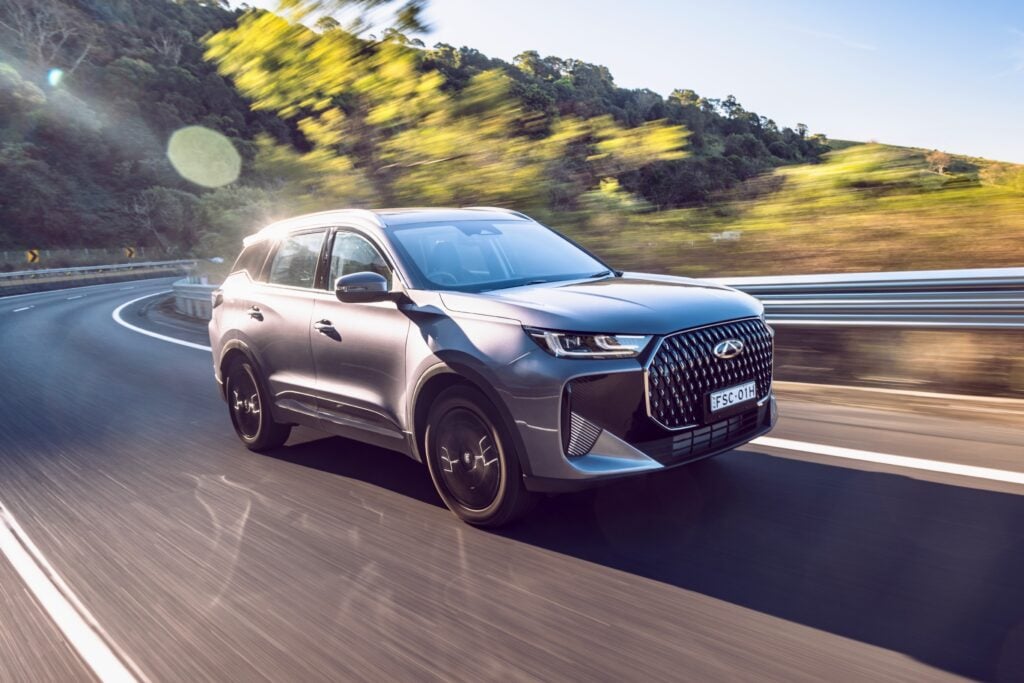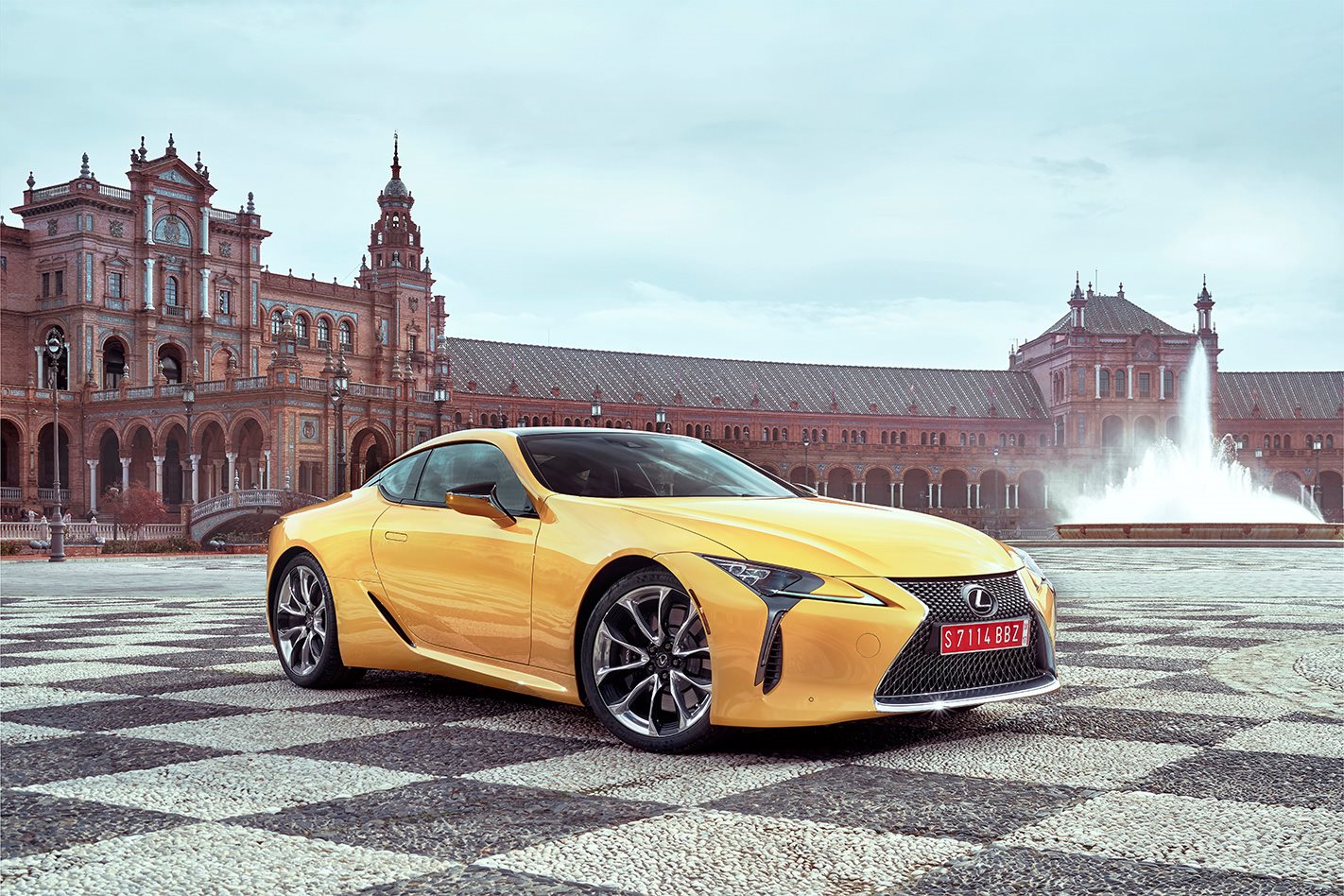
Due to arrive in Australia next year, the Lexus LC – which will be available in the V8-engined LC 500 guise or as a V6 hybrid LC 500h – picks up from where the LFA supercar left off.
Though some of the LFA’s more bespoke features are absent, like its high-revving naturally-aspirated V10, rear-mounted drivetrain and suspension, the LC 500 and LC 500h certainly occupy the low-slung coupe-shaped hole left by the LFA.
Positioned as Lexus’ new performance flagship, the Japanese automaker has now revealed the full spectrum of details for its high-end sports car family. Expected to launch locally in May 2017, pricing is still yet to be announced for the LC pair.
LC 500
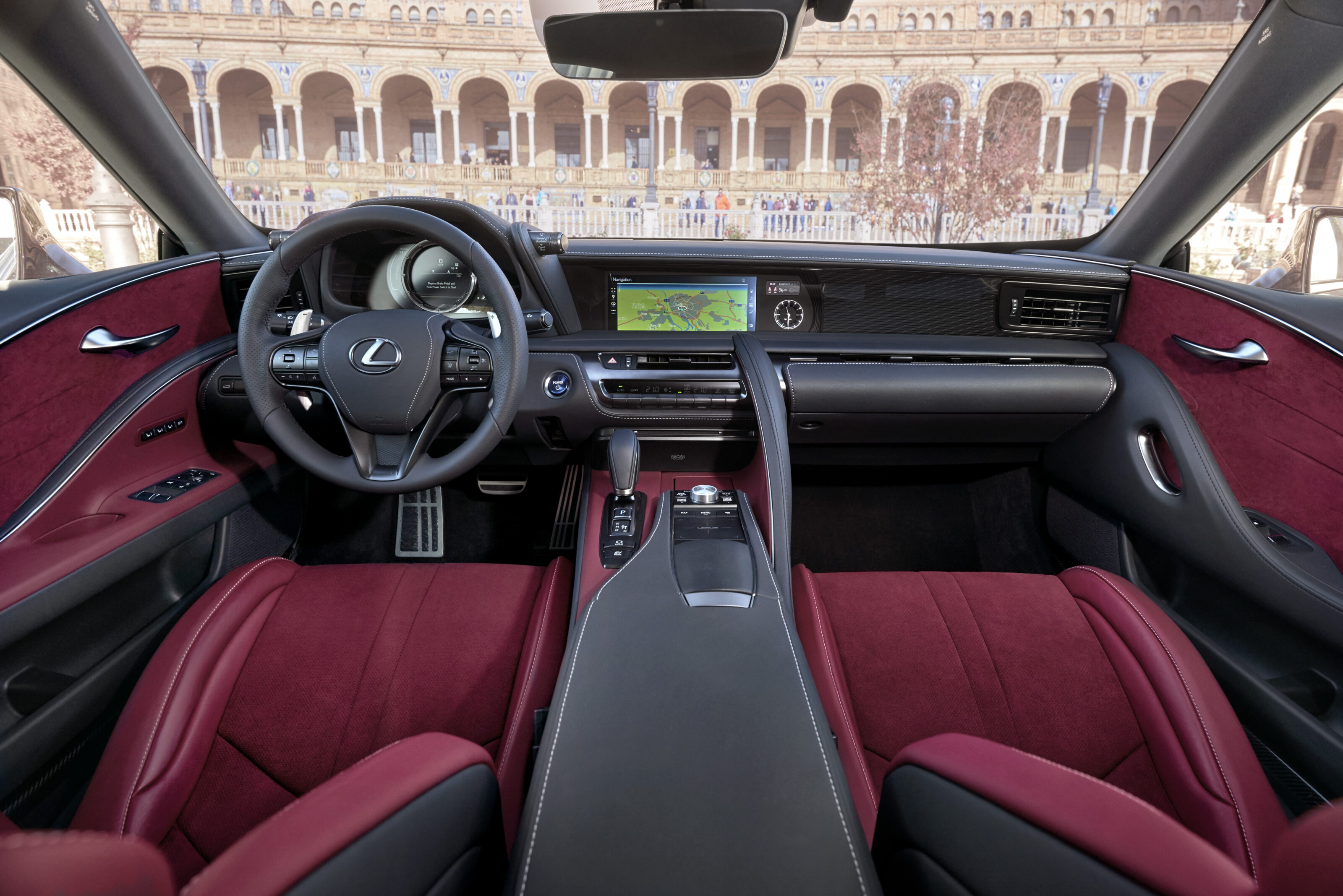
That’s not all that’s new either, with the chassis that underpins the LC also being a box-fresh design. Dubbed GA-L, the LC’s platform eschews the LFA’s part-aluminium, part-carbon fibre architecture in favour of one constructed mostly from high-tensile steel.
Kerb weight is high as a result – the LC 500 tips the scales at a hefty 1935kg when empty – but performance is nevertheless brisk. From a standing start, the LC 500 will rip to 100km/h in a respectable 4.7 seconds.
The ten-speed automatic features closely-stacked gear ratios to permit the greater use of each gear. While some eight and nine-speed automatics have their upper gears reserved strictly for autobahn speeds, Lexus purposely tuned its ten-speeder to enable drivers to make the most of the car’s rev-happy nature.
It’s still a conventional torque converter automatic though, a stark contrast to the single-clutch automated manual used by the LFA. While not as snappy as a twin-clutch, Lexus claims the LC 500’s auto can swap gears just as quickly, with clean rev-matching on downshifts and a lock-up function for the torque converter to improve power transmission.
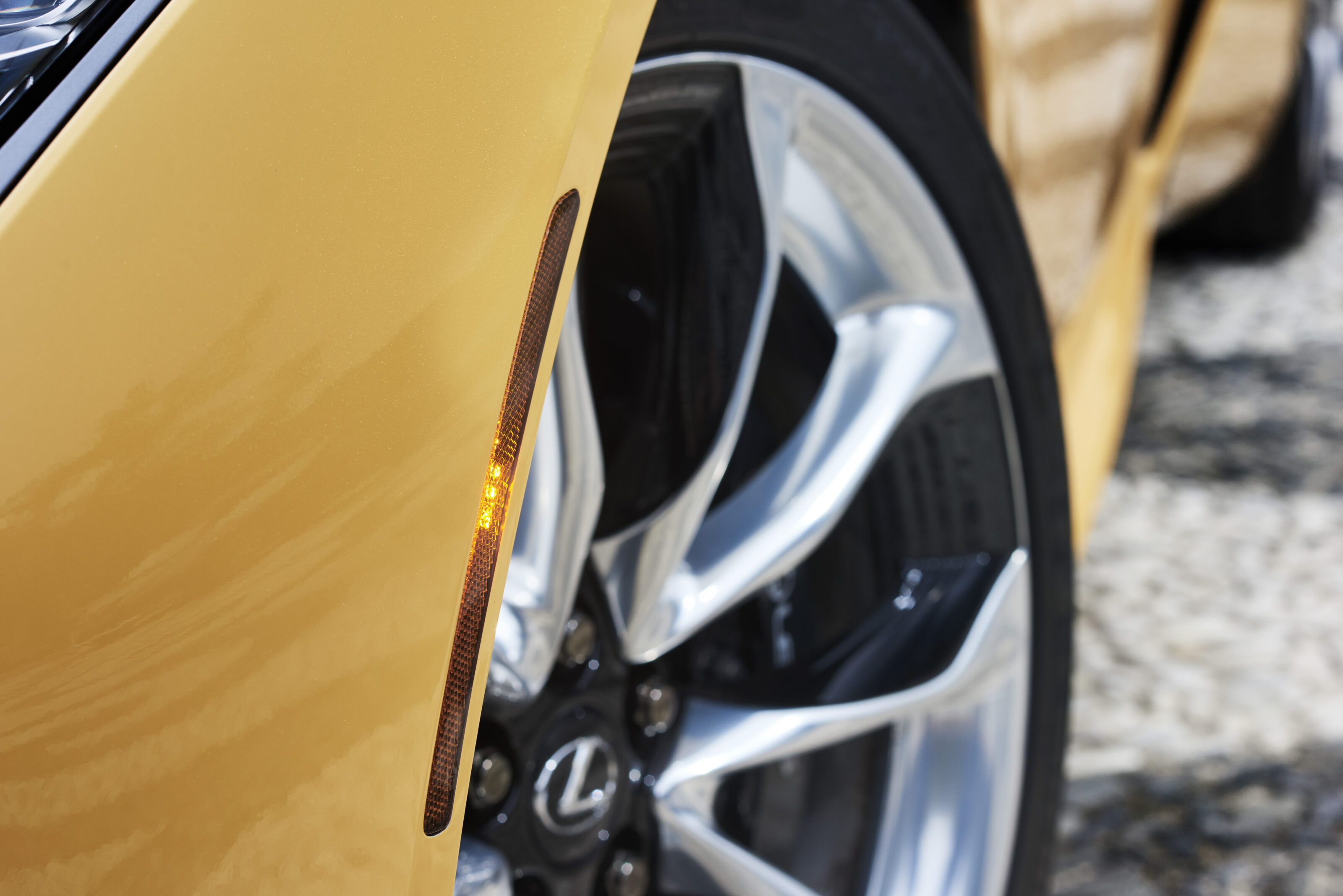
While not crucial for performance, the LC 500’s engine note has been massaged by Lexus to improve in-car sonics. Induction noise is piped through to the firewall via a specially-tuned chamber that enhances the more appealing frequencies of the 5.0-litre V8. At the back, active exhaust valves open up to bypass the muffler baffles, unleashing more decibels and a sportier note.
On the chassis side, Lexus has focused on the LC 500’s dynamics. The liberal use of the D-word in the LC’s press pack is a solid clue that handling, rather than comfort, was the primary concern of Lexus’ engineers.
Thanks to new construction methods, the LC’s GA-L platform is more torsionally rigid than the LFA and has been designed to keep mass as centrally located in the chassis as possible to boost handling response and promote a neutral front-rear weight distribution. Aluminium has been used in some exterior body panels to keep weight down, while carbon fibre features in a non-structural capacity.
A new multi-link front and rear suspension design is tuned to give sharp steering, while still providing decent ride compliance. Suspension geometry is entirely unique to the LC, and some suspension arms are made of forged aluminium to cut weight. Four-wheel steering couples a variable ratio electrically-assisted rack at the front and an electric actuator at the rear, with the result being faster response to steering input and improved high-speed stability.
A limited-slip differential is also standard on the LC 500, and helps minimise wheelspin when cornering under power.
LC 500h
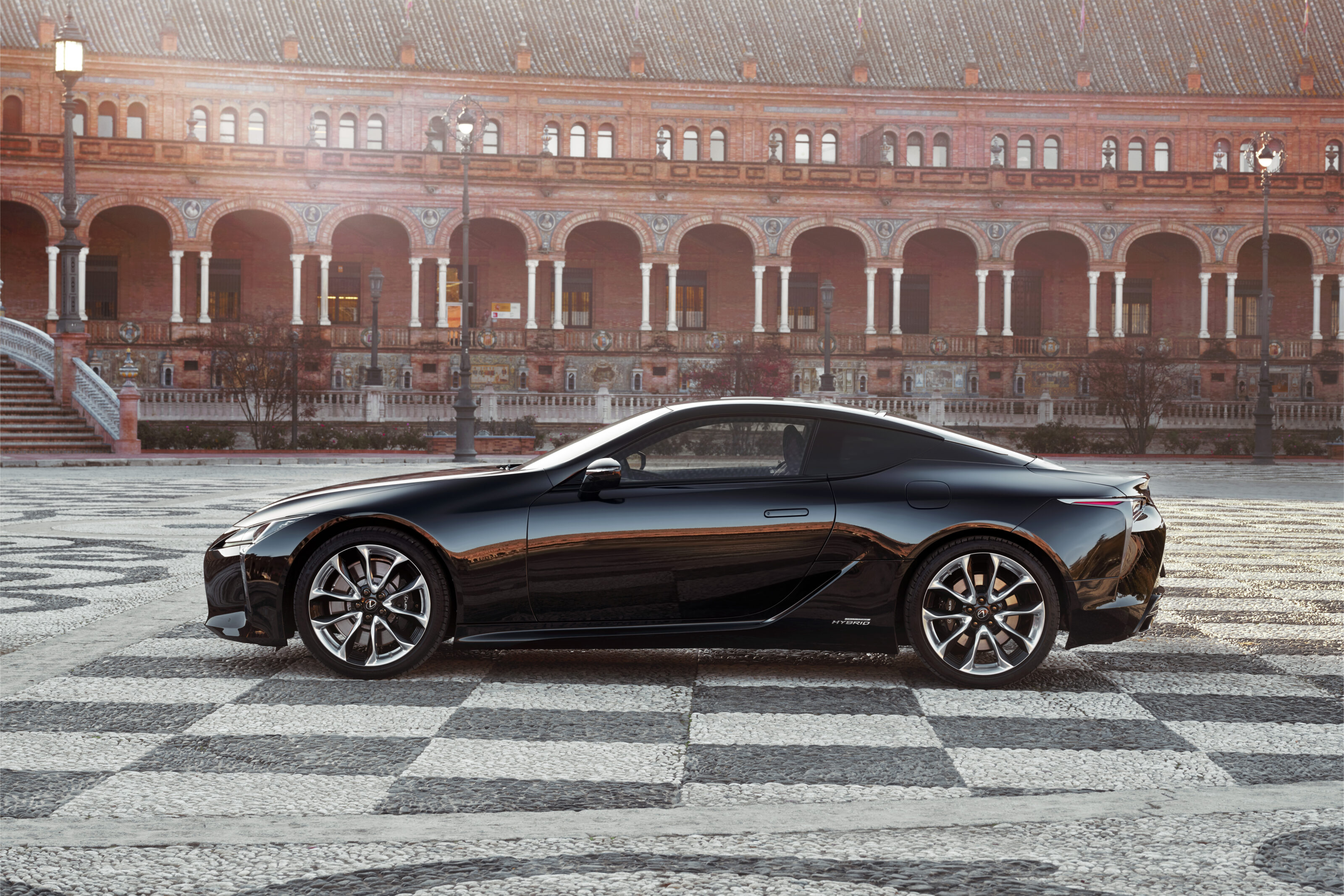
The LC 500h petrol-electric hybrid follows the LC 500’s format, but replaces the 5.0-litre V8 with an electrically-assisted 3.5-litre V6. Power peaks at 264kW with both electric motor and petrol engine working in concert, with maximum torque of 348Nm.
The LC 500h’s zero-to-hundred time clocks in at five seconds flat – slower than its conventionally-powered V8 sibling, but not by much.
It’s not just the engine that sets the LC 500h apart from the LC 500; its transmission is also radically different. With just four forward gears and no reverse, the LC 500h runs its electric motor backwards when reversing, and a special “Multi-Stage Hybrid” system allows it to mimic the shift feel of a ten-speed automatic. Manual gearshift control can also be enabled via the steering wheel mounted paddles.
Australia-specific specification levels have yet to be announced, however the LC range will be available with adaptive radar cruise control, pre-collision warning and detection, blind spot monitoring, auto high-beam, lane-keep assist and lane departure monitoring. It is expected that the full safety suite will be standard on Australia-bound cars.



